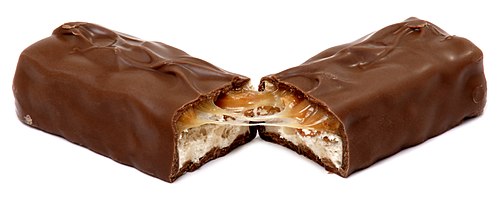
A candy bar is a type of portable candy that is in the shape of a bar.
Contents
Many varieties of candy bars exist, [1] [2] and many are mass-produced. [3] [4] Between World War I and the middle of the 20th century, approximately 40,000 brands of candy bars were introduced. [1] [5]







